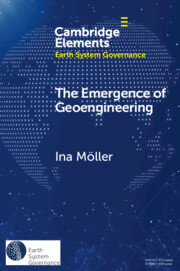Element contents
The Emergence of Geoengineering
Published online by Cambridge University Press: 14 January 2023
Summary
- Type
- Element
- Information
- Online ISBN: 9781009049696Publisher: Cambridge University PressPrint publication: 09 February 2023
References
- 16
- Cited by

